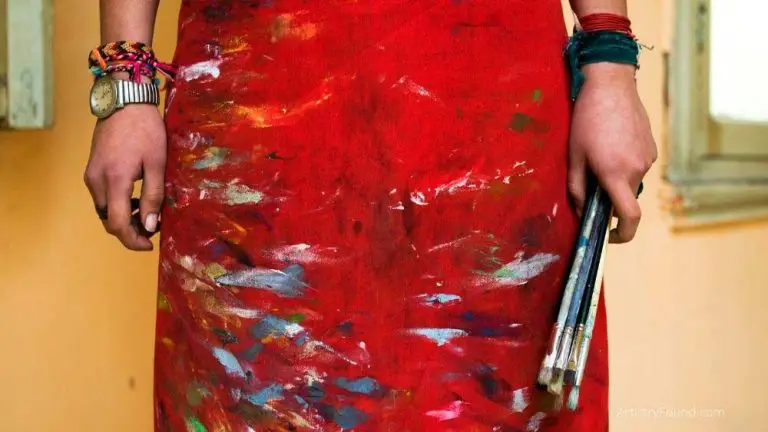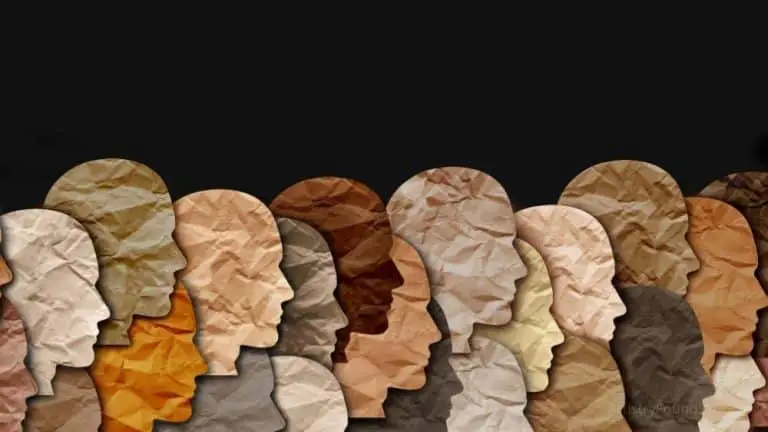Why Artists Sign Their Work (Explained)
To sign or not to sign? That is the question many artists ponder before finishing a piece. If you’re wondering why artists sign their work, there are actually multiple reasons.
Artists sign their work as evidence of authorship. Additionally, by signing their pieces, an artist can carry on with artistic tradition and increase the value of their artwork while having another way of separating themselves from the crowd.
In this article, I’ll dive deeper into why artists sign their work and discuss how this tradition first started.

(This article may contain affiliate links and I may earn a commission if you make a purchase)
When Did Signing Artwork Begin?
From the dawn of time, artists have found ways to leave unique, personal touches on their artwork.
Enter the age of the Renaissance, where artists marked work with their signature as a means to receive credit for their creations.
Not only were their respected talents celebrated, but they were also acknowledged and awarded accolades for their achievements.
Combined with the evolution taking place at the time in the world of visual art where art buyers desired to showcase their collections as a means to increase their place on the social-class pyramid and highlight their financial bounty, artist’s signatures started to become more common.
Why do Artists Sign Their Work?
There is more than one simple reason for an artist to sign his or her artwork. Here are a few of the most important ones:
1. Artistic tradition
The mark of an artist on their work has gone on for hundreds, maybe even thousands, of years.
It is seen as a primary component of the creative process, defining a finished piece of work that the artist is pleased with.
Artists often sign their original work just for the sake of signing. It’s what has always been done and has almost become a requirement in the art world today.
Many artists’ signatures have become almost as noted as the artist themselves and reproduced on merchandise found all over the world today including Frida Kahlo, Leonardo Da Vinci, and Vincent Van Gogh, just to name a few.
2. To claim their work
A primary reason artists sign their work is to mark ownership and confirm that they are the sole creator.
When an art forger attempts to replicate a piece of art, they must also expertly apply the artist signature of the artist.
The reason being is that millions of artworks exist, but many times, the artist’s signature is the most one-of-a-kind aspect of the piece.
3. To increase their artwork’s value
If you were to ask an art appraiser what it is that increases the value of a famous artist’s work, any appraiser worth their salt would say it is a clear signature.
As strange as it may seem, this is also true for prints, giclée, and posters created by modern artists. With the value tied to a signature, it’s a wise move to sign each piece.
Why Signing Artwork is Important Even Today
With reproductions of artwork ramping up, artists’ reputations become crucial in upping a piece of art’s value.
Plagiarism of signatures is common, leading to alterations in the way a professional artist signs their original work.
As part of the identification process, experts are brought into the authentication stage when high-value artwork is bought or sold.
In addition to the signature, numbering artwork (aka limited edition print), specifically pieces that are part of an edition, and stamps are often applied if more than one copy will be created.
The less common a piece is, the higher its worth and appeal.
When it comes to digital works, certain additional care is required. For example, artists will use an ink pen to mark digitally printed works.
Lastly, a Certificate of Authenticity, which has become common over the last several decades, provides an alternative to the artist’s signature, proves the artwork’s authenticity, and decreases the likelihood of forgery.
Are There Any Downsides to Signing Artwork?
The art world is somewhat divided when it comes to signing artwork. While most encourage the practice (for all of the reasons listed above), a segment of artists detest signatures.
These artists believe signing their work can ruin the composition altogether and come off ‘tacky’; depreciating the value of their pieces.
However, it’s important to keep in mind that the decision to sign one’s artwork is one only the artist can decide. If you don’t see the value a signature adds to your pieces, then you’re better off not signing them.
Just remember, in this digital age, not adding a signature or watermark to your pieces can put your pieces at risk of being stolen or plagiarized.
Unique Artist Signatures Throughout History
Francisco de Goya
Well-known for discovering odd methods to add his signature to his artwork, de Goya uses unique placement like rings, books, etching plates, and other uncommon spots to mark his pieces.
Banksy
While anonymous, graffiti artist Banksy leaves a personal mark to tie himself to his work.
Banksy’s distinct signature pairs well with his eye-catching artwork. Over the years, as his notoriety has increased, he’s begun to leave out his signature from his creations.
Paul Gauguin
Common to Impressionist artists, Gauguin’s handwritten signature was not extremely unique, but his placement on the work of art was.
When he signed his original piece, he specifically used paint that would be distinct from the rest of the painting to keep it from mixing into the artwork.
Final Thoughts
So, as you can see, there are a multitude of reasons why artists sign their work.
Mainly an artist will sign their work to carry on artistic traditions, claim their work, and increase its value.
If you’re an artist, you might be on the fence when it comes to signing your work.
Many artists avoid signatures because they believe signing their art can ruin the composition and feel ‘tacked on’. These concerns are valid.
With that said, to sign or not to sign is really up to the artist themselves, so feel free to make the best decision for you and your artistic vision.
Keep in mind, though, not signing your artwork could lead to your work being reproduced and plagiarized down the line.
If you intend on making money with your art, you should consider a signature (or a watermark for digital pieces), as this will add some protection to your work.








